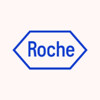
The Study of CU06-1004 in Patients With Diabetic Macular Edema (DME)
Diabetic Macular EdemaThis phase 2a trial is a randomized, open-label, parallel-group study in approximately 60 patients with DME to evaluate the efficacy and safety of CU06-1004 orally administered once daily for 12 weeks. The study will have a 1:1:1 randomization (CU06-1004 100mg: CU06-1004 200mg: CU06-1004 300mg).

Wireless TENS for Peripheral Edema (Lower Limb Swelling)
Peripheral EdemaThis study is single center, subject will receive a wireless TENS device. All subjects will be allowed to keep the commercially-available device for use after the study. The primary goal is to test the feasibility of the study design and secondary is to test the preliminary efficacy of the TENS.

A Study to Investigate RO7200220 in Combination With Ranibizumab in Diabetic Macular Edema
Diabetic Macular EdemaStudy BP43464 is a phase II, multicenter, randomized, double-masked active comparator-controlled study designed to assess the efficacy, safety, tolerability, pharmacokinetics (PK) and pharmacodynamics (PD) of RO7200220 in combination with, anti-vascular endothelial growth factor (VEGF) inhibitor, ranibizumab compared with ranibizumab alone in participants with diabetic macular edema. Only one eye will be chosen as the study eye. The duration of the study will be 76 weeks.

Additional Effect of Subthreshold Micropulse Laser to Intravitreous Injection of Bevacizumab on...
Diabetic Macular EdemaIn this study, all eyes with diabetic macular edema who meet the inclusion criteria and do not meet the exclusion criteria will be included. After the eye examination, the eyes will be randomly divided into 2 groups {group A: intravitreal interjection of Bevacizumab and subthreshold micropulse laser, and group B: intravitreal injection of Bevacizumab alone}. For both groups, 3 intravitreal injections of bevacizumab with a dose of 1.25 mg will be performed, in sterile conditions at 1-month intervals as a loading dose. A subthreshold micropulse laser will be performed after the third injection in group A and a sham laser will be performed after the third injection in group B. Then, the intravitreal injection of Bevacizumab will be continued if the central thickness of the macula is equal to or greater than 300 microns. The follow-up will be performed 2, 3, 4, 6, 8, 10, and 12 months after the first injection. In each follow-up (except for the first month), ophthalmological examinations and Optical Coherence Tomography will be performed.

Screening for Individual Susceptibility Factors to Immersion Pulmonary Edema
Pulmonary EdemaImmersion Pulmonary Edema (IPE) is a relatively new form of hemodynamic pulmonary edema. The number of cases has been increasing over the last ten years and it has become the second most common cause of hospitalization for military divers, after decompression sickness. The pathophysiological mechanisms of IPE are not completely known. Its occurrence is linked to a combination of factors related to the environmental constraints of diving, as well as to the diver's equipment. The main external factors are increased hydrostatic pressure, cold, intense effort and emotional stress. The impact of internal factors is not known. At this time, no severe forms of IPE have been identified in the military. However, it is important to identify this pathology at an early stage, even if the signs appear minor, because the continuation of underwater activity can significantly worsen the clinical picture. The risk of recurrence (greater than 15%) could result in a severe or even lethal accident.

OphtAI Diagnostic Performance Validation for Automated Screening of Eye Diseases
Diabetic RetinopathyDiabetic Macular Edema3 moreEvolucare OphtAI is a medical device offering automated, artificial intelligence powered, screening capabilities for Diabetic Retinopathy, Diabetic Macular Edema, Glaucoma, ARM and AMD, whose performances will by tested through the OphtAI-EVAL.

Multicentric Prospective Study to Screen Inborn Errors of Metabolism in Non-immune Hydrops (NIH)...
Non-Immune Hydrops FetalisA fetal hydrops, also called a fetal anasarca, is the buildup of fluid in the serosa and / or fetal subcutaneous tissue. The diagnosis is made by ultrasound, possibly from the first trimester of pregnancy. The etiologies of hydrops can be immune or non-immune. The historically classic immune causes are linked to fetal-maternal alloimmunizations in erythrocyte blood groups. The implementation of systematic prevention of these anti rhesus immunizations since the 1970s has significantly reduced the incidence of immune hydrops Non-immune hydrops (NIH) now represent 90% of fetal hydrops. Known causes of NIH can be classified in several ways depending on the mechanism or organ involved. The prognosis for NIH is closely linked to the cause. Fetal anemia due to maternal-fetal infections can heal spontaneously or give rise to in utero transfusions. Cardiac rhythm abnormalities are accessible to medical treatment. Chylothorax compressions may benefit from in utero drainage, but chromosomal or metabolic causes cannot benefit from antenatal care. The term of pregnancy in which the hydrops is discovered also has an impact on survival, which however remains poor. In France, certain pathologies can be considered as particularly serious without the possibility of treatment and give rise to a request for medical termination of pregnancy. This possibility is subject to acceptance by two practitioners who are members of a multidisciplinary prenatal diagnostic center (CPDPN). This preliminary multidisciplinary reflection participates in the development of prenatal counseling with the greatest precision in diagnostic hypotheses. This prenatal advice is essential for a couple on the decision to make a pregnancy in progress but also for future pregnancies, given the 25% risk of recurrence due to the autosomal recessive mode of transmission. Thus the current screening strategy for inherited metabolic diseases on amniotic fluid is fragmented. The resulting subdiagnosis explains the objective of the study of using the new high throughput sequencing techniques (NGS) in this indication. This approach should make it possible to reduce the number of cases classified as idiopathic, to allow the parents concerned to receive suitable genetic counseling with a view to new pregnancies, and to refine the knowledge of the prenatal epidemiology of these pathologies.

Comparison of Combined Intravitreal Bevacizumab and Oral Acetazolamide Versus Intravitreal Bevacizumab...
Macular EdemaIn this study, which will be performed as a randomized clinical trial, all patients with macular edema with central involvement (central macular thickness greater than 300 μm) and corrected vision less than or equal to 20/40 and better than 20/400 were included in the study. After a thorough eye examination, people are randomly divided into two groups. The first group was treated with intravitreal injection of Bevacizumab in three injections one month apart with receiving oral Acetazolamide tablets of 250 mg twice a day, and the second group was treated with intravitreal injection of Bevacizumab for three Loads are spaced one month apart. Ophthalmologic examinations and corrected visual acuity, as well as macular thickness examination, are repeated with Spectral-domain Optical coherence tomography (SD-OCT) at the beginning of treatment and at the end of the first, second, and third months. At the end of the study, the rate of changes in visual acuity and macular thickness in the eyes in the two groups will be compared and will be statistically analyzed.

iOCT for Patients With Diabetic Macular Edema
Diabetic Macular EdemaPatients will be examined before and after surgery with a stand-alone OCT and intraoperative microscope integrated OCT

Comparing Conventional Grid Laser Photocoagulation and Subthreshold Micropulse Laser in Diabetic...
Diabetic Macular EdemaThe prevalence of diabetes mellitus has increased significantly in Hong Kong for the past decade [1]. Diabetic macular edema is one of the most common causes of vision loss in patients suffering from diabetes mellitus [3]. Before the introduction of anti-vascular endothelial growth factor agents, laser photocoagulation has been the mainstay treatment for patients with diabetic macular edema. There are two types of laser treatment modalities, namely focal laser, which can be applied either in a grid pattern over a region of macular edema or to selected microaneurysms, and subthreshold micropulse laser. Only one meta-analysis published in 2016 [16] had previously demonstrated superiority of micropulse laser over focal laser, while other studies showed no clinically significant differences between the two lasers. Nevertheless, micropulse laser had been proven to cause no structural changes to the retina and choroid, as opposed to focal laser. Optical coherence tomography angiography (OCT-A) is a new, non-invasive imaging technique that allows a clear, depth-resolved visualization of the retinal and choroidal microvasculature in the macular region [22]. A recent case series study [17] has demonstrated early changes of retinal vasculature on OCT-A images after micropulse laser for diabetic macular edema. Another cross-sectional study [18] showed choriocapillaries alterations in some of the patients after receiving focal laser. We would like to compare the changes of different OCT-A parameters for patients receiving either type of laser, and hence evaluating their efficacy. We propose to take OCT-A images for patients before laser, 1-, 3- and 6-months post-laser based on the results of a recent case series [17]. We will analyse the OCT-A images with MATLAB software and compare the changes in different parameters between both lasers.
